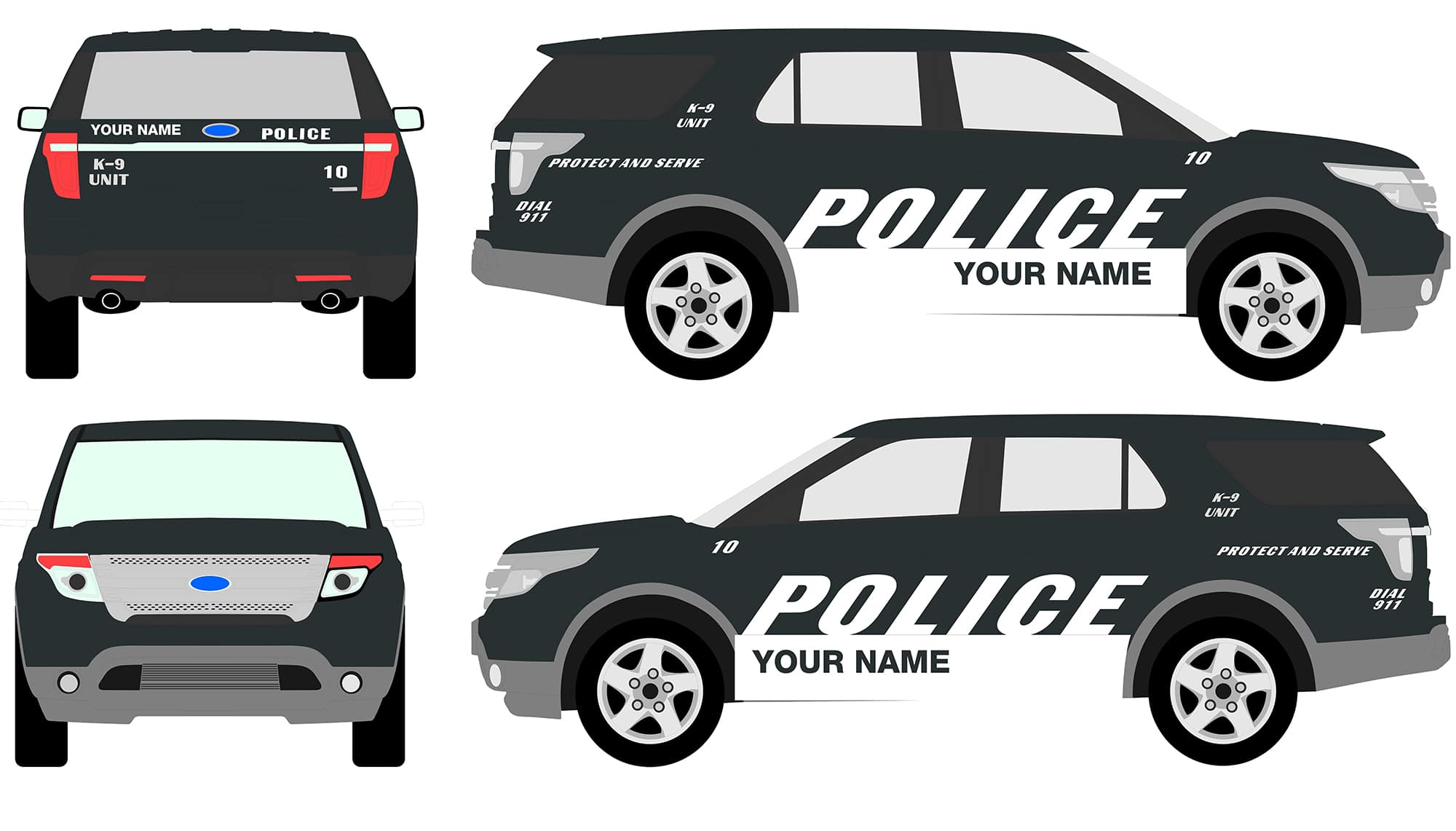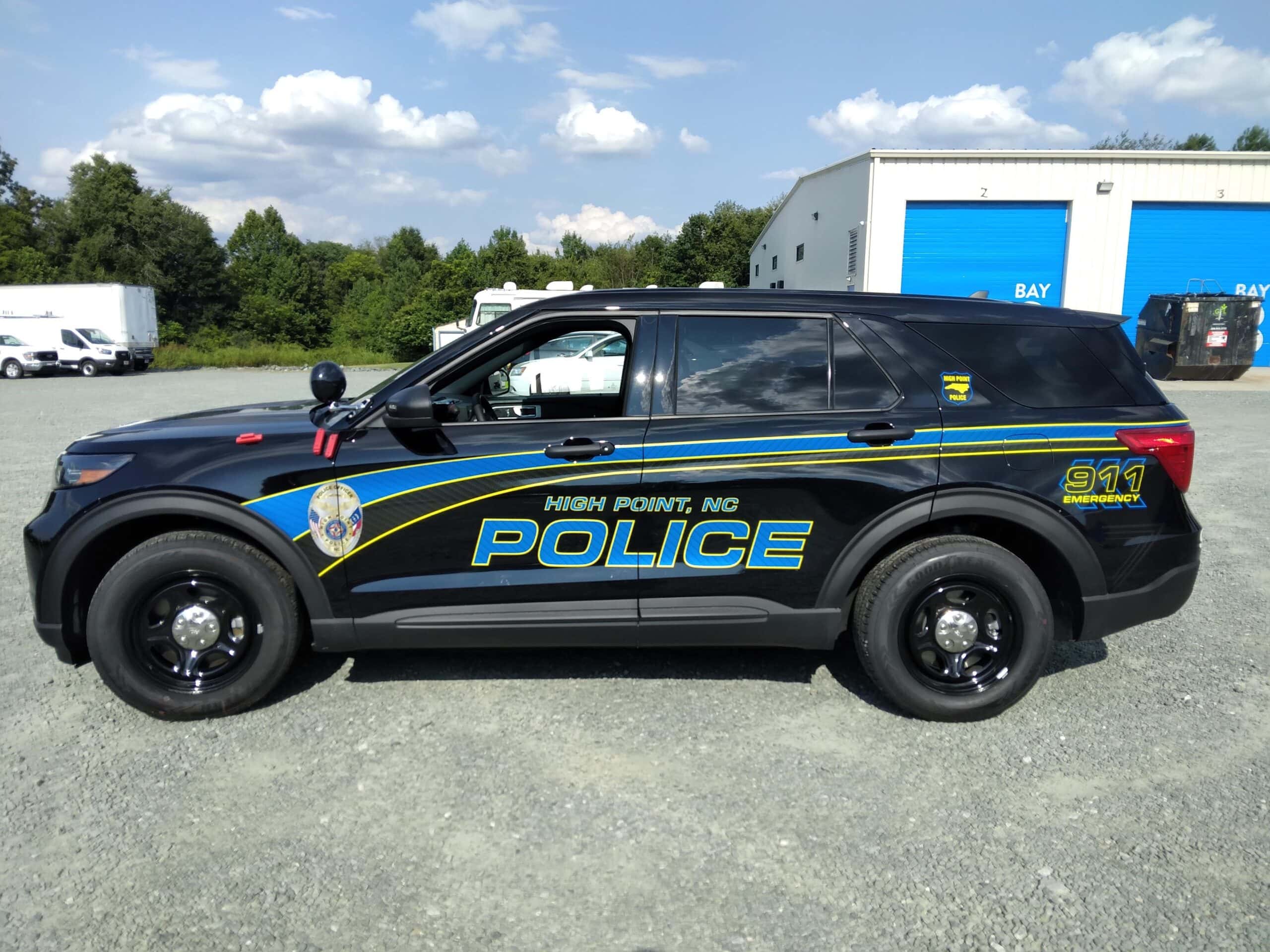Police Cruiser graphics: A History of High-Visibility Design
Police cars are more than just vehicles; they are rolling symbols of authority, safety, and community presence. Their visual identity, largely defined by their graphics, plays a crucial role in public perception and officer safety. This article explores the evolution of police cruiser graphics, examining the trends, technologies, and psychological considerations that have shaped their design.
Early Days: Simplicity and Symbolism
In the early days of policing, police vehicles were often indistinguishable from civilian cars. As the need for readily identifiable police vehicles grew, simple markings began to appear. These early markings often consisted of a single word, “Police,” painted on the side of the vehicle, or a small badge-like emblem. Simplicity was key, driven by the limitations of the time and the desire for clear, concise messaging. These early graphics were often hand-painted, leading to variations in design and quality.

The Rise of Distinctive Markings
As policing evolved, so did the design of police vehicle graphics. The need for greater visibility and a stronger visual presence led to the adoption of more distinctive markings. Two-tone paint jobs became popular, often using contrasting colors like black and white or blue and white. These high-contrast schemes made police vehicles easily recognizable, even at a distance. Stripes and chevrons also began to appear, adding another layer of visual distinction.
The Influence of Technology
Technological advancements have played a significant role in the evolution of police cruiser graphics. The development of reflective materials allowed for greater visibility at night and in low-light conditions. These materials, initially simple reflective paint, evolved into specialized films and decals that offered increased reflectivity and durability. Computer-aided design (CAD) software revolutionized the design process, allowing for more complex and precise graphics. Digital printing technology enabled the creation of high-quality, full-color graphics, opening up new possibilities for design.

The Psychology of Color and Design
The choice of colors and design elements for police cruiser graphics is not arbitrary. It is often based on psychological principles related to visibility, recognition, and the perception of authority. Bright colors like white and yellow are highly visible, especially during the day. Black and dark blue are often used for contrast and to convey a sense of authority. The use of reflective materials ensures visibility at night, enhancing officer safety. The overall design aims to create a balance between visibility and a sense of professionalism.
The “Black and White” Paradigm
The classic black and white police car design has become an iconic symbol of law enforcement. This design, popularized by the Ford Crown Victoria, offers high contrast and is instantly recognizable. The black and white scheme has become ingrained in popular culture and is often associated with traditional policing. While other color schemes have emerged, the black and white design remains a common and recognizable sight.
Beyond Black and White: Exploring New Color Schemes
While black and white remains prevalent, many police departments have explored alternative color schemes. Some departments have adopted more modern and less aggressive color combinations, aiming to improve community relations. Others have opted for highly visible colors like bright blue or green, prioritizing officer safety. The choice of color scheme often reflects the specific needs and priorities of the police department and the community it serves.
The Role of Graphics in Community Policing
In recent years, there has been a growing emphasis on community policing. Police departments have sought to build stronger relationships with the communities they serve, and the design of police cruiser graphics can play a role in this effort. Some departments have incorporated community-oriented messages or symbols into their graphics, aiming to create a more welcoming and approachable image. The goal is to move away from the perception of police cars as solely symbols of authority and towards a view of them as resources for the community.
The Importance of Visibility and Safety
Visibility is a critical factor in police cruiser graphics. Police vehicles need to be easily seen, both day and night, to ensure officer safety and deter crime. High-visibility graphics help to make police vehicles stand out in traffic and alert drivers to their presence. Reflective materials play a crucial role in nighttime visibility, making police vehicles visible even in low-light conditions.
The Evolution of Logos and Insignias
Police department logos and insignias have also evolved over time. Early logos were often simple and symbolic, featuring images like stars, shields, or crossed rifles. Modern logos tend to be more sophisticated, incorporating elements that reflect the department’s mission and values. Some departments have adopted stylized lettering or abstract designs, creating a more contemporary look.
The Use of Specialized Graphics
In addition to standard markings, police cruisers often feature specialized graphics for specific purposes. These might include markings for traffic enforcement, K-9 units, or SWAT teams. Specialized graphics help to identify the specific role of the vehicle and its personnel.
The Impact of Popular Culture
Popular culture, including movies and television shows, has played a significant role in shaping the public’s perception of police car graphics. The iconic black and white police car has become a staple of popular culture, often portrayed in dramatic car chases and crime scenes. This exposure has further solidified the image of police vehicles as symbols of authority and law enforcement.
The Future of Police Cruiser Graphics
The future of police cruiser graphics is likely to be shaped by ongoing advancements in technology and evolving community expectations. New materials and printing techniques may allow for even more innovative and visually striking designs. There may be a greater emphasis on the use of interactive graphics, such as digital displays that can be updated with real-time information. The integration of technology and design will continue to play a crucial role in the evolution of police cruiser graphics.
Conclusion: A Reflection of Evolving Needs
Police cruiser graphics are more than just paint and decals; they are a reflection of the evolving needs of law enforcement and the communities they serve. From the simple markings of the early days to the sophisticated designs of today, police vehicle graphics have played a crucial role in visibility, safety, and public perception. As technology continues to advance and community expectations evolve, the design of police cruiser graphics will undoubtedly continue to adapt and innovate. The balance between visibility, authority, and community engagement will remain a key consideration in the ongoing evolution of police cruiser graphics.
police cruiser graphics
